Death Metal is a subgenre of Heavy Metal that emerged in the early 1980s. Heavily distorted guitars, deep growling vocals, and fast tempos characterize the genre. Death metal became popular during the 1990s, with bands like Cannibal Corpse, Deicide, and Morbid Angel earning strong followings on the world stage.
Table of Contents
A Brief History of Death Metal
In terms of early death metal, the answer would be obvious if one were to ask what’s in a name. Almost every aspect of death metal’s early style was suffused with a startling passion for dark and fantastic depictions of violence. It was brutally graphic imagery and an absolute refusal to offer any hint of nuance that set it apart from the crowd.
Following in the steps of Venom and Slayer, death metal emerged in full force in the late 1980s and early 1990s as a more violent, chaotic, and punitive style of heavy metal than thrash or the original wave of black metal, pushing technical and lyrical elements to new levels.
Early death metal, in general, may be divided into 3 categories of stylistic emphasis:
- violence/gore;
- occult/anti-religious;
- progressive/technical;
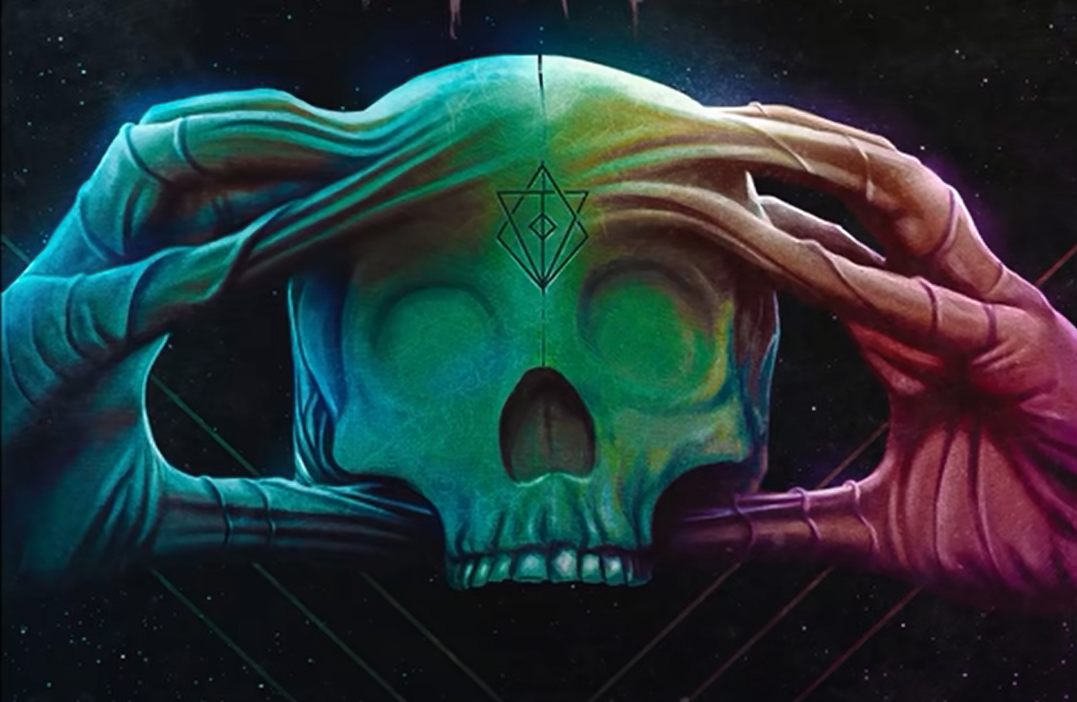
The first category was largely dominated by the bands listed above, who unleashed a wide torrent of hyper-violence throughout death metal’s early years. Cannibal Corpse was the most emblematic of all death metal bands in the late 1980s and early 1990s, as they were all about death metal’s homicidal obsessions.
The group’s debut record Eaten Back to Life exhibited the band’s complete brutality lyrically, musically, and aesthetically, making them known/liked/reviled for death metal’s sheer brutality.
Cannibal Corpse helped cement death metal’s early reputation as one of metal’s most extreme genres throughout the early 1990s by pushing boundaries with blazing speeds combined with graphic depictions of dissection, murder, and cannibalism. They would subsequently enjoy a surprising level of popularity with the general public, being the only metal band to be credited in an Ace Ventura film. Whether or not this is a good or terrible fact is probably debatable at another time.
Acts such as California’s Possessed and Florida’s Morbid Angel and Deicide brought the occult to death metal with songs declaring the ascent of the Lord of Darkness himself, as well as the fall of organized religion, on well-received albums including Altars of Madness and Legion. Outside of the kings of gore, acts such as these were instrumental in bringing occultism to death metal. The 1990s saw a rise in anti-religious ferocity with bands like Immolation and Incantation pushing the thesis of contempt for organized religion, particularly Christianity.
Atheist and Cynic, who utilized a form of jazz fusion in their music, added a new emphasis on technicality and musical adventure. Gorguts, another early giant in the scene, created incredibly dense and complex songs in a style all their own. In terms of subject matter, these bands tended to center on philosophy and existential themes rather than death metal’s more dismal content.

Vocalists departed from the typical snarls and roar seen in other death metal acts, with Cynic, in particular, employing clean vocal passages and a vocoder to bring ethereal, alien vocals to the music’s chaotic jazz-infused madness.
Old school death metal was a wild, creative world where many outstanding bands thrived. The flame of this movement in death metal, on the other hand, was gradually going out by the mid-1990s as genre leaders Morbid Angel and Cannibal Corpse went through lineup changes and dips in quality production, while progressive acts such as Cynic and Atheist had either disbanded or stopped creating new material.
The group that would go on to become the standard-bearers of progressive death metal in the 1990s was formed from the ashes of this stagnation: death [1].
3 Characteristics of Death Metal:
1) Fast and heavy sounds
Two guitarists, a vocalist, a bassist, and a drummer are the usual lineup of death metal bands. The musicians generally produce a sound characterized by a low-tuned, distorted guitar attack and blast beats – a sixteenth-note figure played at machine-gun speed on double-bass drums – which is defined by time signatures and tempos that frequently change without warning.
The lyrics and covers of death metal bands often allude to violence, suffering, anguish, and murder. The imagery focuses on the physical rather than spiritual realm: dead bodies (and body parts), rotting corpses and skeletons, blood-soaked blades, or guns; skulls are a frequent iconographic feature as well.
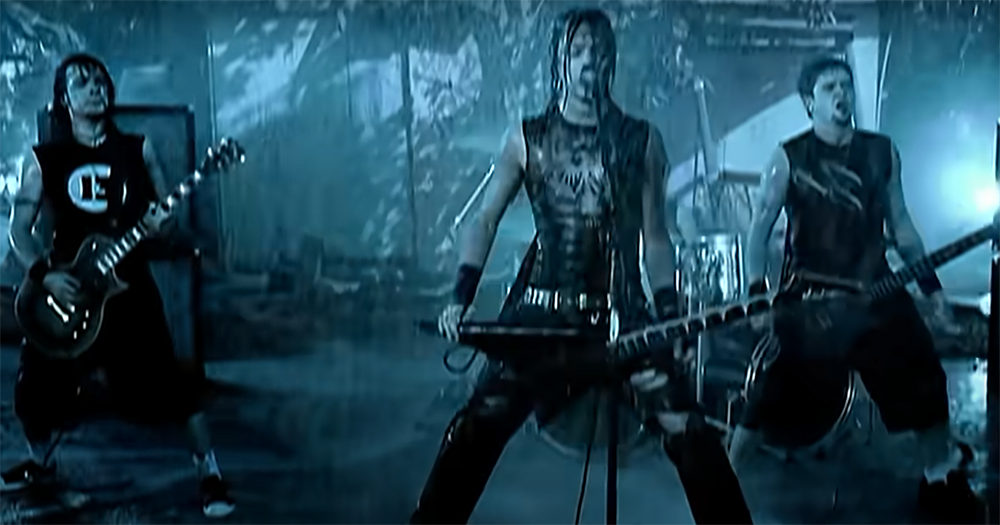
A large number of metal groups perform in white “corpse paint”, which originated with the Swiss black/death group Hellhammer. Black tape is also used for binding limbs such as arms behind backs onstage. This was popularized by Euronymous from Mayhem who wore it during sets because he believed that if people watched extreme music performances they should be reminded that what you see there doesn’t represent reality since one must wear “dead make-up” onstage.
2) Death growls
Death metal’s roaring, snarling vocal method – also known as death growls – is a defining trait of the subgenre. The death growl, which may range in tone and power from guttural grunts to ear-piercing screams heard in songs by Deicide and Dying Fetus, need strong lungs and a sturdy diaphragm to make it.
Death growls are very popular among death metal bands because they make them sound evil and this enhances the mood of their songs that often have dark vibes to start with.
3) Aggressive lyrics
As its name implies, the typical death metal song’s lyrical emphasis is on a person’s death, which is described in gory and macabre language. Issues such as violent crimes, satanic occurrences, and mental illness are also examined.
Some death metal songs, on the other hand, tackle less taboo themes such as philosophy and science fiction. Lyrical themes are a defining feature of extreme metal music.
They typically discuss violence, disease, and hatred. In many situations, these lyrics revolve around death itself, its cause, or a person who has died in a horrible manner [2].

5 Death Metal Subgenres:
1) Brutal death metal
The term “brutal death metal” refers to a subgenre of death metal that emphasizes heaviness, speed, and intricate rhythms over other features such as melody and timbres. Bands utilizing brutal death metal create highly fast, palm-muted power chords and single-note riffing [3].
As a genre modifying tag, brutal refers to the aesthetic aspects of death metal, which are based on typical creative patterns. These often include (but are not limited to) (but are not limited to):
- The more fluid riffs and transitions of many thrash-based death bands, as well as the subsequent melodic death metal versions, still have a lot of start-stop composition versus the less rhythmic grooving guitars of previous years;
- A typical, but highly important technique for recreating the sound of a bass drum. The most essential and widely used room mic is not always the best one in terms of sound quality. Ease and convenience are more important than intricacy or large nuance when it comes to blasting drums;
- Guttural vocals are more common on the lower end of the death metal vocal spectrum (especially in slamming brutal death). This aspect, like the drums and guitars’ syncopation, appears to have been affected by cross-influence from grindcore;
- When it comes to equipment, the most popular choices are reasonably modest: 4- and 5-piece bands (or even smaller), with keys and other such accessories, usually being blasphemy;
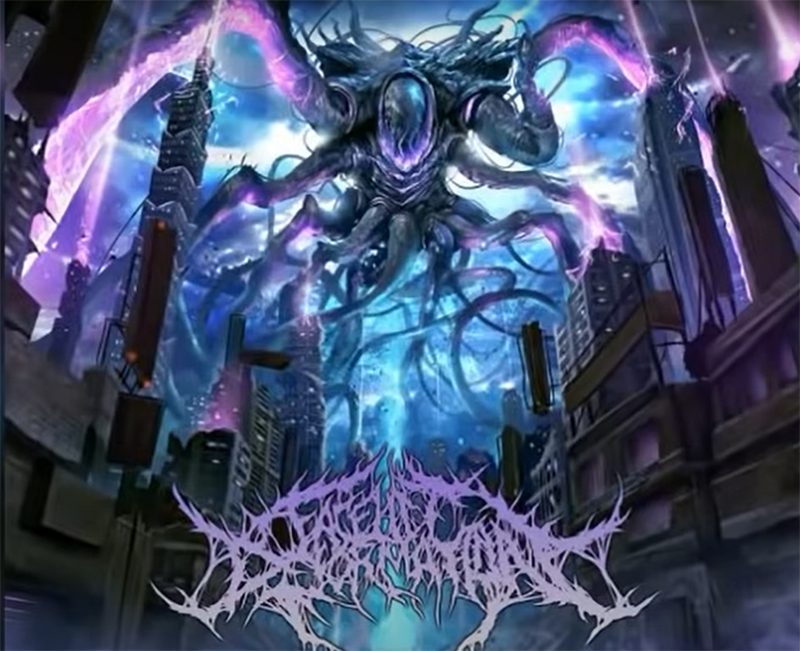
2) Deathcore
The overdriven sound of deathcore is a metal variant that combines death metal with metalcore. The style consists of death metal guitar riffs, blast beats, and metalcore breakdowns. Deathcore emerged in the early 2000s and began to grow in popularity during the mid-2000s, particularly in the southwestern United States. It gained most of its exposure in the southwestern United States, especially Arizona and northern California (mainly the Coachella Valley), which are home to many famous bands and various festivals.
The deathcore genre began in the early 2000s with bands like Antagony, Despised Icon, and the Red Chord. The birth of deathcore in the mid-2000s saw All Shall Perish, Through the Eyes of the Dead, Bring Me the Horizon, Suicide Silence, Carnifex, Job for a Cowboy, Chelsea Grin, and Whitechapel emerge as some of its most prominent practitioners. Deathcore acts started mixing other genres in the 2010s.
The deathcore genre has been criticized by long-time fans of heavy metal music, particularly for the use of breakdowns. Some deathcore artists have rejected the term [4].
3) Death doom
A subgenre of heavy metal called death-doom is one example. It mixes the slow tempos and pessimistic or depressive mood of doom metal with the deep growling vocals and double-kick drumming of death metal. The style emerged in the late 1980s and experienced a certain amount of popularity during the 1990s, but it was less popular by the start of the 21st century. As a result, death-doom gave rise to gothic metal’s more melodic, gloomy, and romantic variants.
Although the genre is no more, funeral doom, a style that mixes death-doom with more fun al dirge music, endures. It’s played at a sluggish tempo and emphasizes the feeling of desolation and despair. Electric guitars are often heavily distorted, and gloomy ambient elements such as keyboards or synths are frequently used to generate a “dreamlike” atmosphere. Vocals include sad chants or roars that are usually in the background [5].
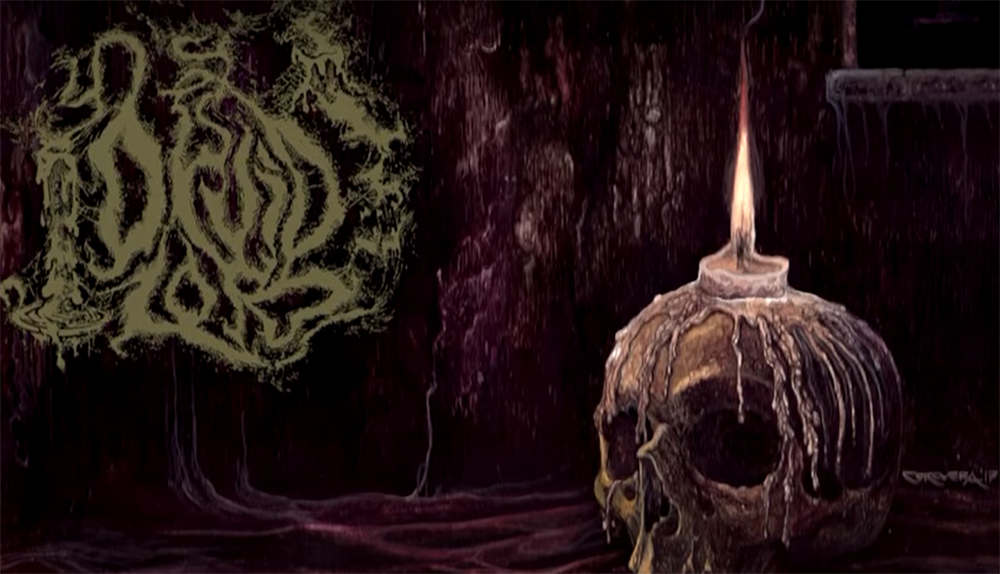
4) Melodic death metal
Melodic death metal (melodeath) is a form of death metal that became popular in the early 1990s. The sub-genre, as the name implies, is a melodic version of death metal music. The development of the Gothenburg sound was crucial. Early on, bands such as At the Gates, Dark Tranquillity, and In Flames blended death metal with traditional heavy metal and Scandinavian folk music to create what’s known as the Gothenburg sound.
Finland is also a vital location for melodic death metal. Many of the quicker melodic bands, such as Children of Bodom, Kalmah, and Northern grew famous. Finland is home to many melodic death metal groups that combine death/doom metal and/or gothic metal in their music, including Insomnium, Rapture, and Before the Dawn.
The 2000s were a period of significant change for the genre. Many bands, especially those from England, have become more commercial and incorporated elements of nu-metal and metalcore into their music. Soilwork is the easiest one to see.
Melodic death metal is frequently combined with other styles such as progressive metal, doom metal, thrash metal, or black metal. It was difficult to determine where one style ended and the next began [6].
5) Technical death metal
Tech-death metal (also known as technical death metal) is a genre of death metal that started in the early to mid-1990s and focused on difficult, demanding instrumental ability and complex songwriting.
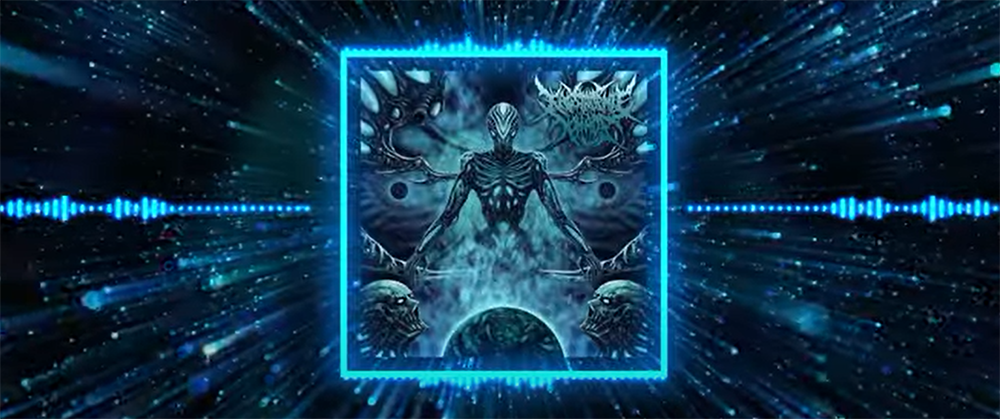
The late 1980s and early 1990s were when technical experimentation in death metal began by four bands that are often referred to as “death metal’s Big Four”, including Death, Pestilence, Atheist, and Cynic; all but Pestilence being from the Florida death metal scene.
This music style contains several distinct characteristics, including:
- complex and unusual rhythmic constructions;
- lots of diminished chords and arpeggios usage;
- frequent use of odd-time chord progressions;
- constant string skipping on the guitars;
Basslines are generally difficult, and the drums are extremely fast-paced, with a lot of blast beats and other extreme drumming techniques.
The technical death metal genre has also been influenced by largely jazz fusion, thrash metal, and progressive/technical-inspired heavy metal bands such as Death, Megadeth, Slayer, Voivod, Kreator, Dark Angel (formerly Tyrant), Coroner (formerly Sadus), and Watchtower (formerly Dark Angel). The latter of whose second album Control and Resistance (1989) is often regarded to be one of the genre’s sources of inspiration [7].
5 Notable Death Metal Bands:
Behemoth
Behemoth is a Polish extreme metal band formed in the early 1990s with a caustic blend of black and death metal that was enhanced by a hefty portion of religious provocation. The group, which was prosecuted by the Polish government for ripping up a bible and imprinting the country’s coat of arms on a T-shirt, released their debut full-length album, Sventevith, to rave reviews. Subsequent releases like Demigod (2004), The Apostasy (2007), and The Satanist (2014) showed a broad musical vision that incorporated folk music, synths, choirs, and orchestras while still maintaining their intense, extreme metal sound. During their career, the band endured numerous member changes, with founding vocalist/guitarist Nergal being the only constant member [8].
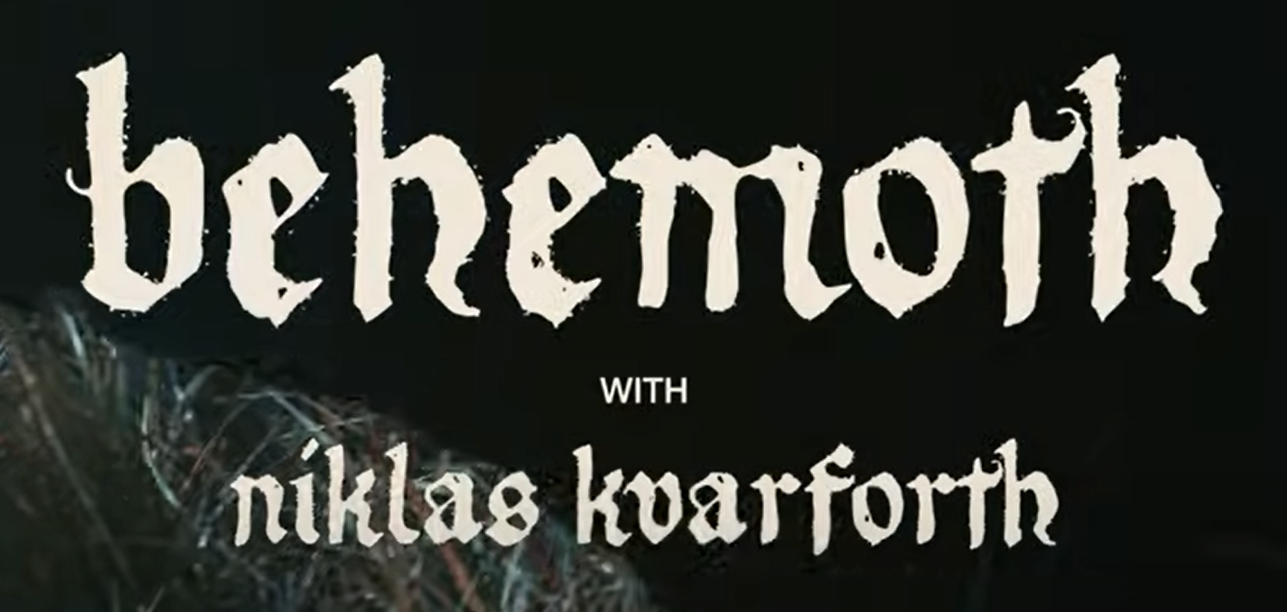
Cannibal Corpse
Cannibal Corpse is one of the most renowned and heated death metal bands of all time, having formed in 1990 with a ferocious musical attack featuring blast beats, deep vocals, and extremely violent lyrics. The band’s gruesome album artwork and lurid song titles, which abound in splatter-horror imagery, have sparked plenty of debate across the years and on occasion resulted in their works being banned. However, their macabre and unrepentant aesthetic has earned them a rabid cult following, with LPs such as Gore Obsessed (2002), Torture (2012), and Violence Unimagined (2021) helping to make them one of the top-selling death metal bands of all time.
In 1988, Cannibal Corpse was formed in Buffalo, New York. Their lineup was mostly made up of musically active scene members: vocalist Chris Barnes, guitarists Bob Rusay and Jack Owen, bassist Alex Webster, and drummer Paul Mazurkiewicz. They were stylistically comparable to Slayer, although death metal bands such as Death also had a part in their sound [9].
Death
Chuck Schuldiner, the band’s primary vocalist and guitarist, formed Death in 1984 in Altamonte Springs, Florida. Death is regarded as one of the most influential bands in heavy metal history, as well as being a formative influence on the death metal subgenre. Their debut LP Scream Bloody Gore has been considered one of the first death metal albums alongside Possessed and Necrophagia’s debuts.
Death had a revolving cast of musicians, with Schuldiner as the only constant member. The band’s sound evolved from raw to more sophisticated throughout its existence. After Schuldiner died of glioma and pneumonia in December 2001, the band disbanded, but its influence on heavy metal endures [10].
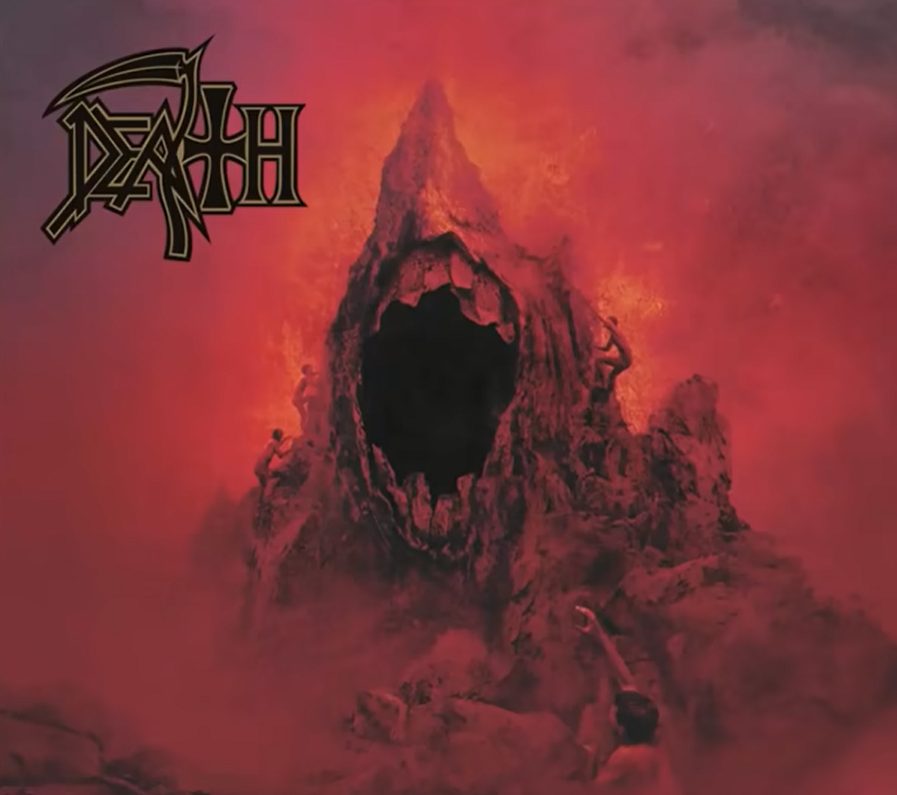
Deicide
Deicide is a death metal band from Tampa, Florida, formed in 1987 as “Carnage” with drummer Steve Asheim and guitarist brothers Eric and Brian Hoffman as “Amon”, before adding bassist/vocalist Glen Benton.
They changed their name to Deicide in 1989. In 1992, the band achieved major prominence with Legion and is ranked as the second-best-selling death metal act of the Soundscan era, after Cannibal Corpse. Since releasing their debut album in 1990, Deicide has released eleven studio albums, one live album, two compilation albums, and two live DVDs.
In November 2003, Deicide and Legion, their first two albums, were ranked second and third in the SoundScan era for best-selling death metal LPs. Their lyrics have been banned, filed lawsuits, and received criticism from religious organizations and the general public due to their themes of Satanism, anti-Christianity, and blasphemy [11].
Possessed
Possessed are widely regarded as the godfathers of death metal, having invented it in 1983 with the recording of a three-song demo simply known as Death Metal.
With sheer ferocity and the distinct, throaty roar of frontman Jeff Becerra, the group burned a trail for future death metal fans with their influential LPs Seven Churches (1985) and Beyond the Gates (1986), which paved the way for other bands to distance themselves from the crowded Bay Area thrash scene. They reformed in the 2010s and subsequently returned to the studio to record their long-awaited third full-length album, Revelations of Oblivion, in 2019 [12].
FAQ
1. What is the point of death metal?
The goal of death metal is to convey violence and murder in song form, which makes it heavier metal. It often has incredibly fast drums and guitar parts, gruff vocals that sound like someone attempting to impersonate a monster, and subjects about death, terror, or darkness [13].
The goal of death metal, like with all the other genres on the list, is to convey an emotion. For others, it’s about creating music they can dance to. It’s also possible that many people feel compelled to express themselves through death metal because it enables them to do so in a creative and personal manner.
Head-banging riffs aren’t the only thing that death metal is known for, although they are certainly a part of it. There are plenty of bands who have significant ideas that don’t always conform to what you’d expect from the term “death metal”.
2. What kind of metal is death?
Heavy metal is commonly referred to as death metal. It’s characterized by high-pitched, growled vocals and harsh guitars that are heavily distorted. Fast-paced rhythms and melodies, as well as unusual song structures, are also common features of this kind of music.
On the other hand, death metal developed out of thrash metal’s speed and complexity, as well as Biker and Extreme metal’s raw extremities. Death metal rose to popularity in the mid-1980s. Slayer, Possessed, and pioneering death metal bands such as Death and Morbid Angel are among the genre’s major influences.
In the late 1980s and early 1990s, death metal gained greater media exposure as prominent record labels such as Earache Records and Roadrunner Records began signing Death metal bands at a rapid rate. Since then, the genre has diversified, with numerous subgenres emerging [14].
3. Why is death metal so bad?
They write that the high amplitude, fast tempo, and other discordant features of death metal may elicit the release of neurochemicals like epinephrine – which may underlie feelings of good energy and power enjoyed by fans, as well as tension, anxiety, and anger experienced by non-fans [15].
Some people dislike death metal and have a love-hate relationship with it. Some fans believe that the music’s chaotic nature is therapeutic, while others may claim that its harshness is excessively negative and unhealthy for one’s mental health.
4. Why does death metal make me happy?
According to Bill Thompson and his team’s research, individuals with long-term exposure to music with violent themes and aggressive lyrics can develop a degree of desensitization when exposed to such depictions. However, in our previous research, they discovered that death metal fans, particularly those who like bands with violent themes, feel empowered, joyful, transcendental, and peaceful while listening to this sort of music.
It appears that they allow the lyrics to slide that appear to be quite misogynistic and violent. Alternatively, they don’t interpret them linguistically but rather on an emotional level that simply adds to their sensation of energy and empowerment [16].
5. Which is better – black metal or death metal?
The faster style of black metal is more chordal, tremolo-picked, and high-pitched in nature, focusing on atmosphere rather than technique. Death metal has a lot more technical and chugging riffing, as well as variation in speed. Lowered-pitched, guttural vocals are more common in death metal [17].
6. What came first – black metal or death metal?
In 1982, Bathory’s song “Black Metal” was originally released on an album entitled Black Metal, which also helped to pioneer other extreme music genres such as Thrash, Speed, and Death.
Obscenely occult extreme metal that flourished in the 1990s as a reaction to popular death metal and grind, informed by earlier advanced metal genres of the early to mid-’80s (sometimes retroactively labeled as “first wave black metal”) [18].
7. Is death metal goth?
Many members of the goth subculture see heavy metal as the “crass, unrefined macho antithesis” to everything their music stands for. In contrast to the “softer” and “more feminine” qualities of gothic music, the heavy metal genre is generally associated with aggressiveness and maleness. [19].
8. What does listening to metal say about a person?
There are a few things about listening to metal that tell the others what kind of person a metalhead is:
1) It gives you the sense that you’re a member of a group. The first and most important aspect is that listening to heavy metal makes you feel like you’re a member of a community. Being a fan of heavy metal allows you to create ties with people by listening to your favorite music, going to concerts, and socializing with your friends.
Metalheads are known for their devotion and sense of camaraderie, which is second to none. Never underestimate the strength of belonging to a bigger whole.
Being part of a community and fostering a sense of belonging is critical for one’s self-esteem and mental health. According to another research, being isolated and alone has some significant health hazards.
2) It can make you read more. A love of anything, especially Heavy Metal, is likely to inspire a similar range of interests. If you’re a die-hard fan, you’ll undoubtedly be reading blogs, periodicals, and possibly even books about the topic.
It’s never a bad thing to encourage teenagers or young adults to read. Some heavy metal devotees may even create a lucrative profession in the media field out of it.
Reading will help you in the long run. Various scientific research has also shown that reading can provide a number of significant health advantages, including longer life expectancy, enhanced empathy, and increased creativity and flexibility.
3) It is, in fact, beneficial to the brain. According to interesting research, listening to music you enjoy, such as Heavy Metal, may improve your cognitive abilities and memory. It discovered that there were some intriguing changes in the brain based on participants who listened to music – either liked or disliked.
Researchers discovered that individuals were significantly less able to rotate objects in their minds if they listened to music they disliked. Participants’ short-term memory capabilities appeared to be reduced when they listened to music (liked or disliked). Make of it what you’ll.
4) It makes you more inclined to try new things. Another research, however, has found that heavy metal fans, or individuals who enjoy more intense and complex music, are more open to new experiences. The researchers found that heavy metal fans, like other devotees, had a negative attitude toward authority. The study did, however, reveal that many fans displayed relatively less self-esteem and a desire for uniqueness. They also appeared to have a lower level of religiosity, which is unsurprising given the structure of organized religion’s inherent authoritarianism.
5) It’s possible that listening to heavy metal will make you less violent. Despite the notion that genres like heavy metal create fans more aggressive, research suggests the opposite. According to a recent study, listening to heavy metal reduces violence sensitivity. The research also revealed that long-term fans are generally happier in their youth and have better mental health as they age. Furthermore, another study found that heavy metal may aid in the rapid calming down following an upsetting event. Participants were made angry and then assigned to listen to heavy metal.
Extreme music was found to have a positive impact on listeners’ emotions, which may be linked to increased feelings of happiness. This indicated that “extremist” music might be useful in reducing negative feelings such as anger.
6) It might make you more critical. Any negative claims about the genre encourage consumers to conduct their own research. Fans may strengthen their investigating skills by examining the allegations when the media, or other authorities, state that heavy metal makes fans more violent or pessimistic, among other things.
This provides for the development of critical thinking, an understanding of logical fallacies, research design concerns, and respect for biases. Of course, like any close-knit community, it can have the opposite effect as well. However, living within a “bubble” of belief is not just limited to metalheads. It’s simply an occupational hazard.
7) Metal music helps you relax and feel better. Last but not least, listening to any type of music that you enjoy has been found to significantly reduce stress levels over time. Over time, when we listen to our favorite songs, the amounts of cortisol in our bodies are dramatically reduced. This is significant because stress is considered the reason for around 60% of all sicknesses and diseases [20].
9. What type of metal is Metallica?
Metallica is a heavy metal band from the United States that created the speed metal style in the early and mid-1980s. Ride the Lightning was released in 1984, following the release with the title Kill ‘Em All (1983) [21].
10. What is the difference between Heavy Metal and Death Metal?
Heavy metal music typically has a slower tempo than death metal. The genre also involves increased usage of harmonies, melodic elements, and more traditional musical characteristics such as high-pitched melodies and guitar solos.
Death metal often features fast tempos that are played with power chords or low extended jams; deep growling vocals; heavily distorted guitars due to extreme amounts of gain in amplification (usually from both electric guitar and bass)and “wet” sounding drum production with extremely hard-sounding double kick drums and cymbal strikes dispersed throughout songs for percussion effect.
11. Is Slipknot a death metal band?
Slipknot is classified as a nu-metal band. The group has also been characterized as heavy metal, alternative metal groove metal, death metal, hard rock, grindcore, thrash metal, and rap metal [22].
12. What kind of metal is Lamb of God?
Lamb of God is a prominent figure in the New Wave of the American Heavy Metal movement. The band’s music has been dubbed groove metal, and they are often referred to as a groove metal group. They’ve also been labeled death metal, heavy metal, industrial metal, and perhaps even thrash metal [23].
Useful Video: Who Really Invented Death Metal?
References:
- https://www.heavyblogisheavy.com/2017/01/25/death-in-transition-a-brief-history-of-the-evolution-of-death-metal/
- https://www.masterclass.com/articles/death-metal-guide#3-characteristics-of-death-metal
- https://en.wikipedia.org/wiki/Death_metal
- https://en.wikipedia.org/wiki/Deathcore
- https://en.wikipedia.org/wiki/Death-doom
- https://deathdoom.com/death-metal/melodic-death-metal
- https://en.wikipedia.org/wiki/Technical_death_metal
- https://www.allmusic.com/artist/behemoth-mn0000789429/biography
- https://www.allmusic.com/artist/cannibal-corpse-mn0000545534/biography
- https://en.wikipedia.org/wiki/Death_(metal_band)
- https://en.wikipedia.org/wiki/Deicide_(band)
- https://www.allmusic.com/artist/possessed-mn0000299429/biography
- https://www.kerrang.com/the-news/faq-death-metal
- https://worldofmetal.fandom.com/wiki/Death_metal
- https://treinamento24.com/library/lecture/read/654659-why-is-death-metal-so-bad
- https://www.dw.com/en/death-metal-creates-feelings-of-joy-and-empowerment-study-says/a-48080532
- https://www.reddit.com/r/Metal/comments/i501l/wtf_is_the_diffrence_between_black_metal_and/
- https://www.discogs.com/style/black+metal
- https://en.wikipedia.org/wiki/Gothic_metal
- https://interestingengineering.com/7-amazing-mental-benefits-of-listening-to-heavy-metal
- https://www.britannica.com/topic/Metallica
- https://en.wikipedia.org/wiki/Slipknot_(band)
- https://en.wikipedia.org/wiki/Lamb_of_God_(band)

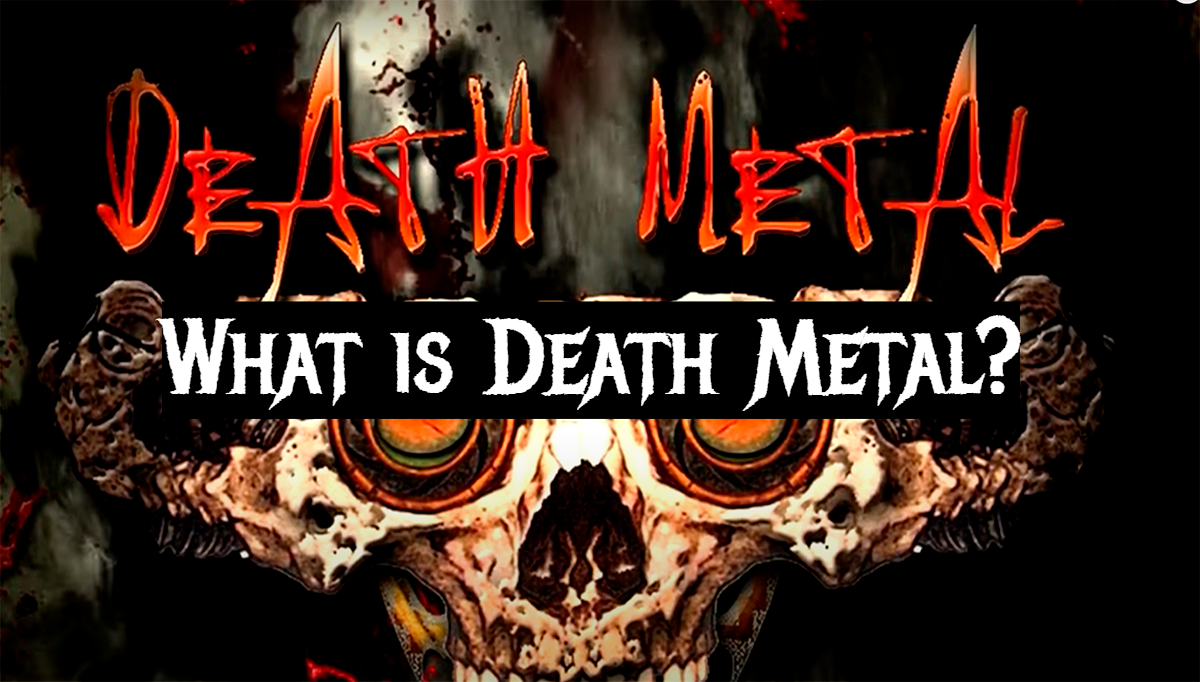
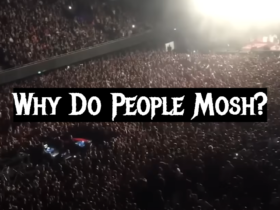

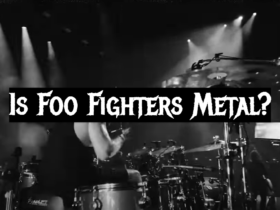
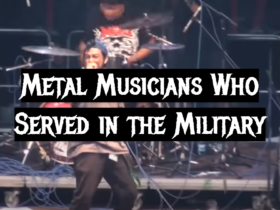
Leave a Reply